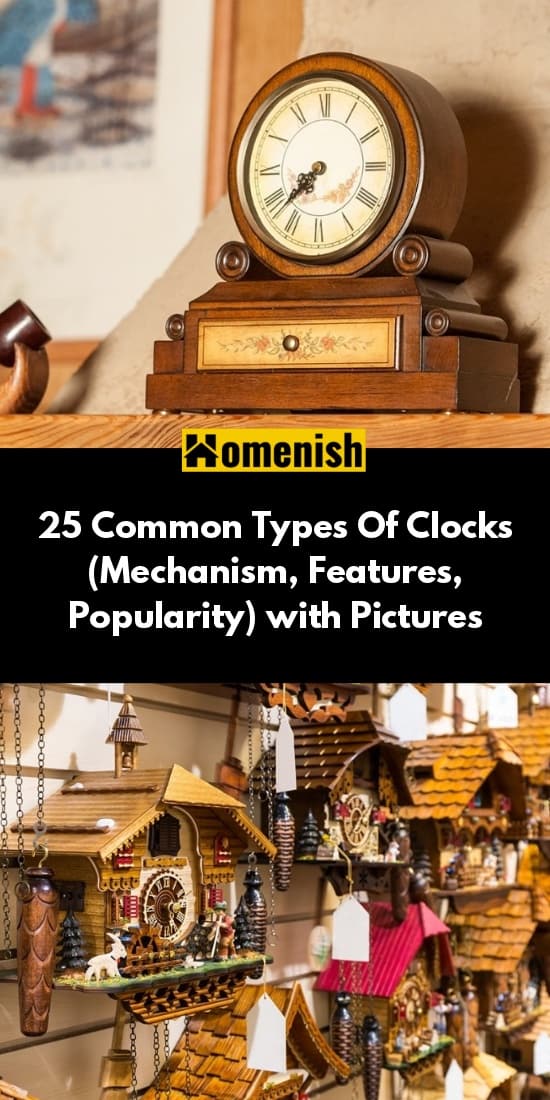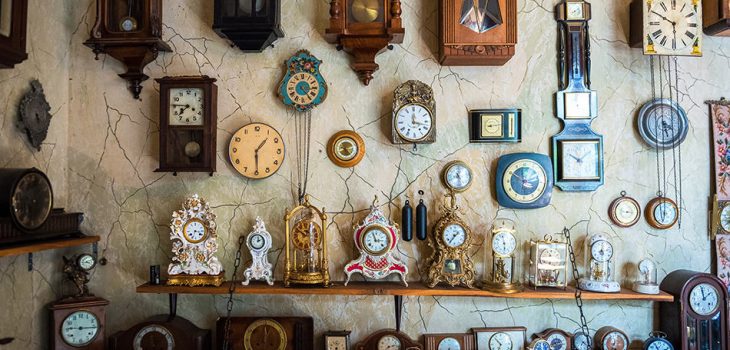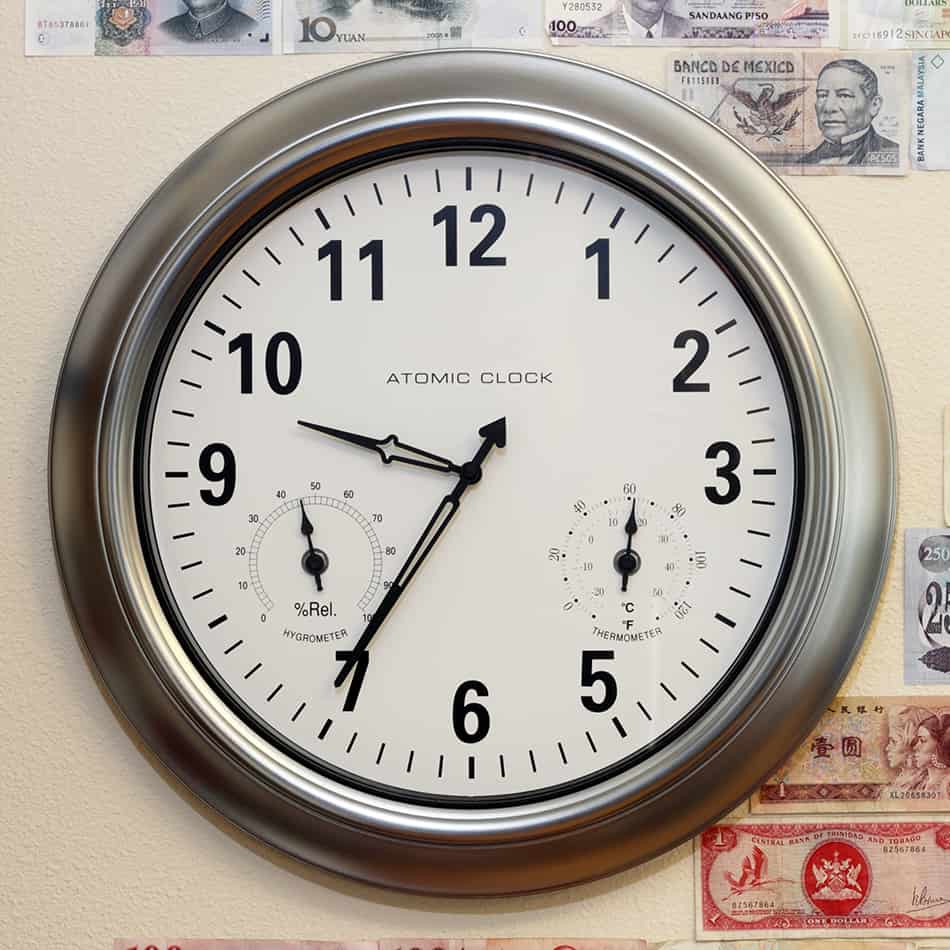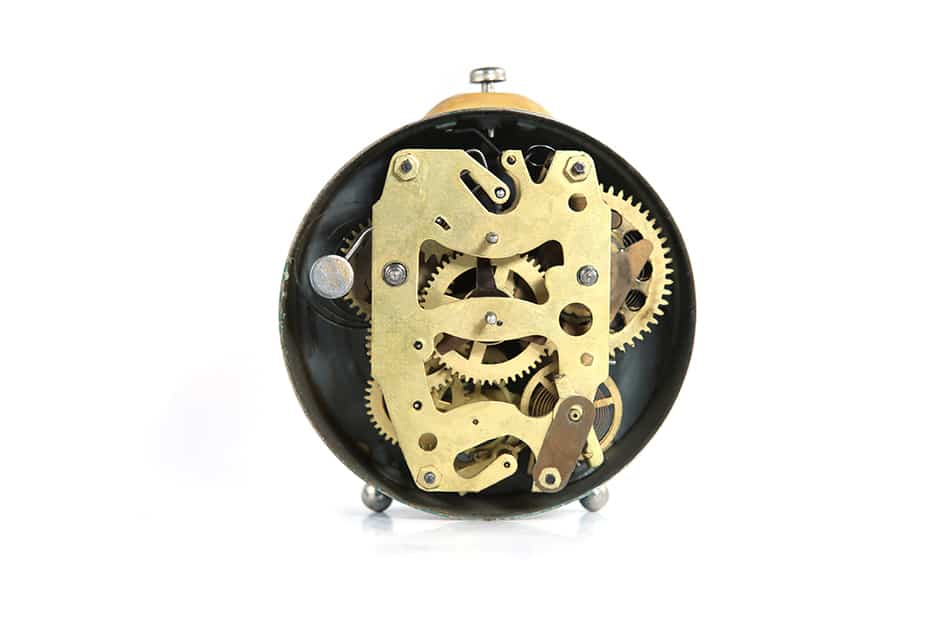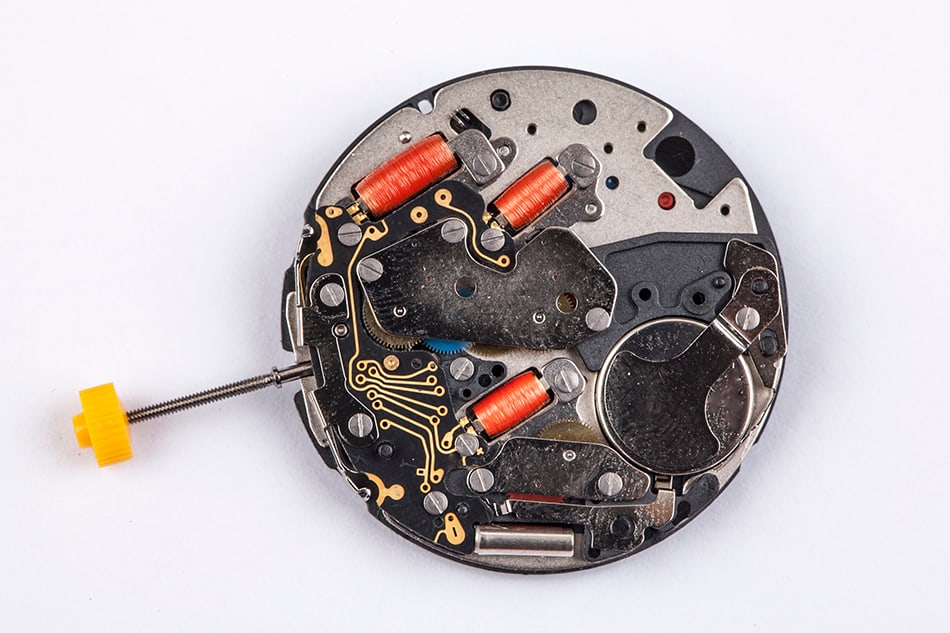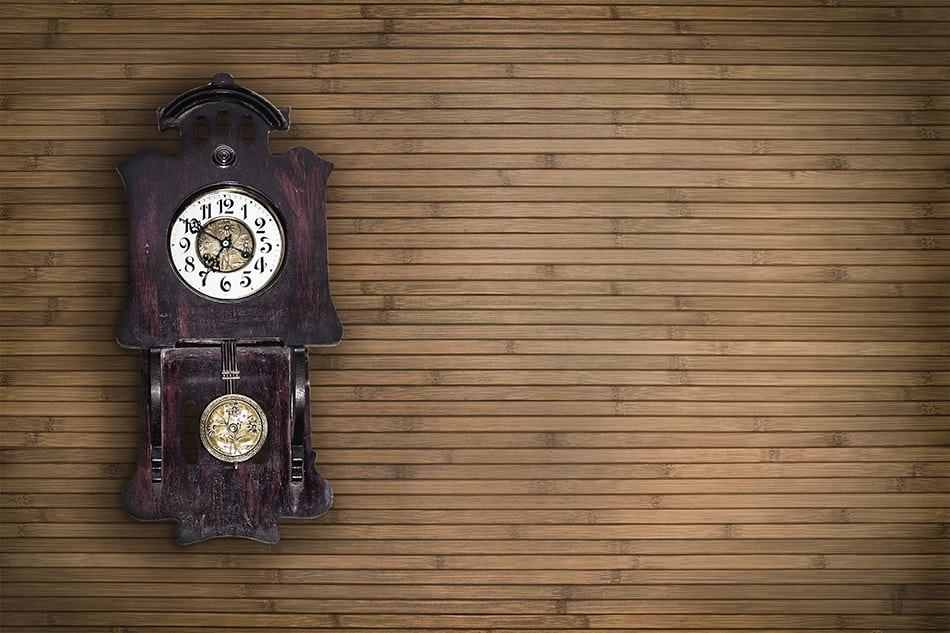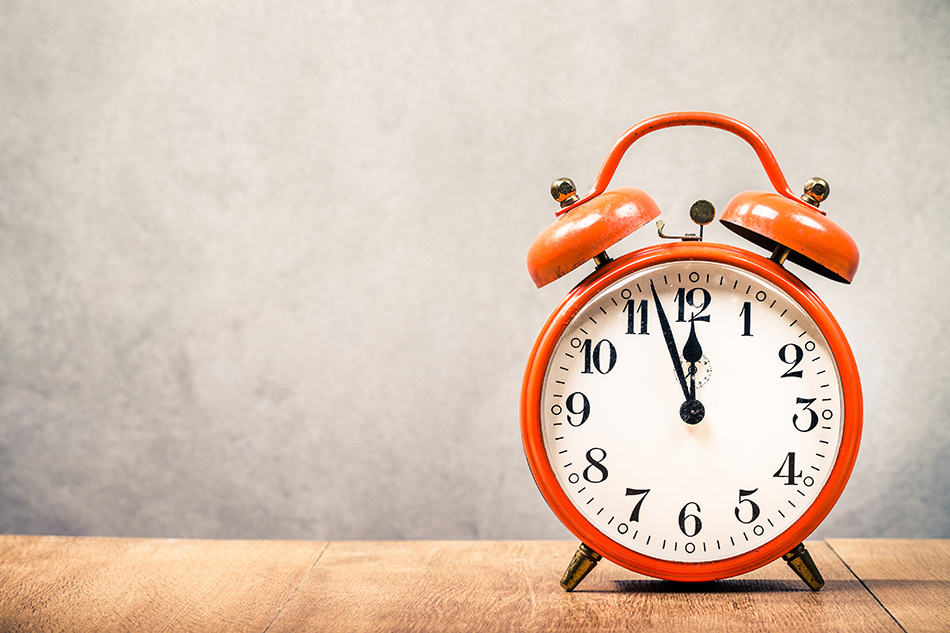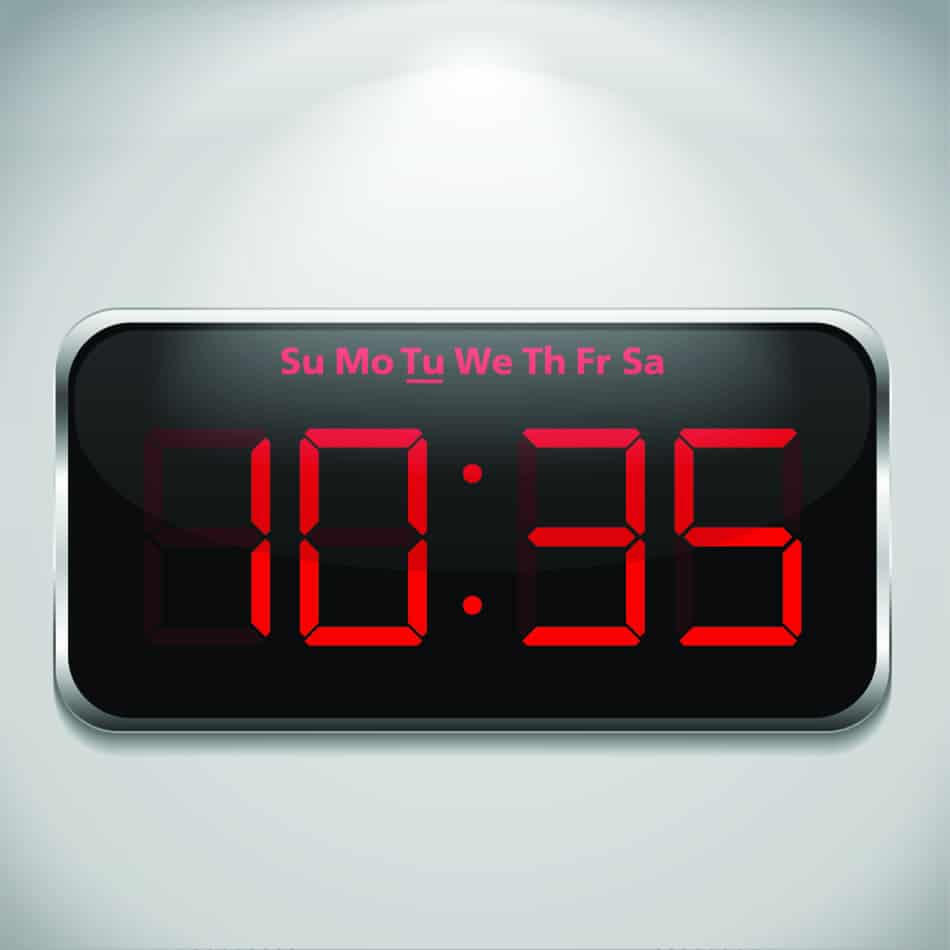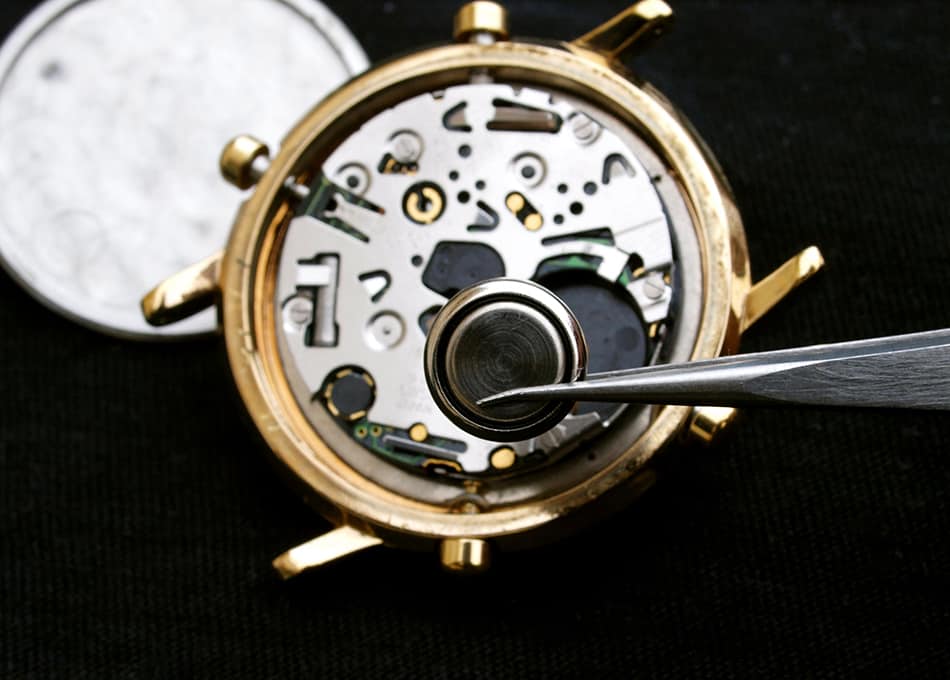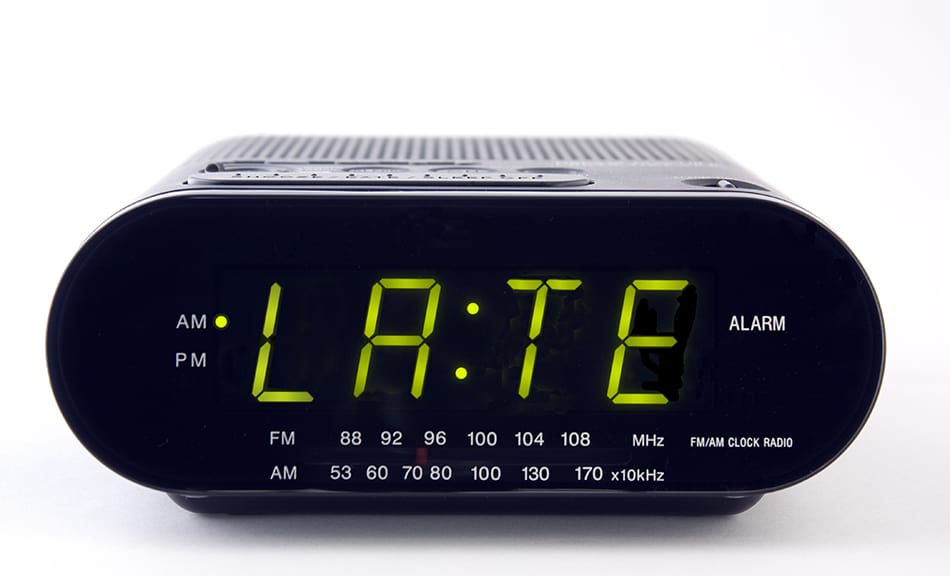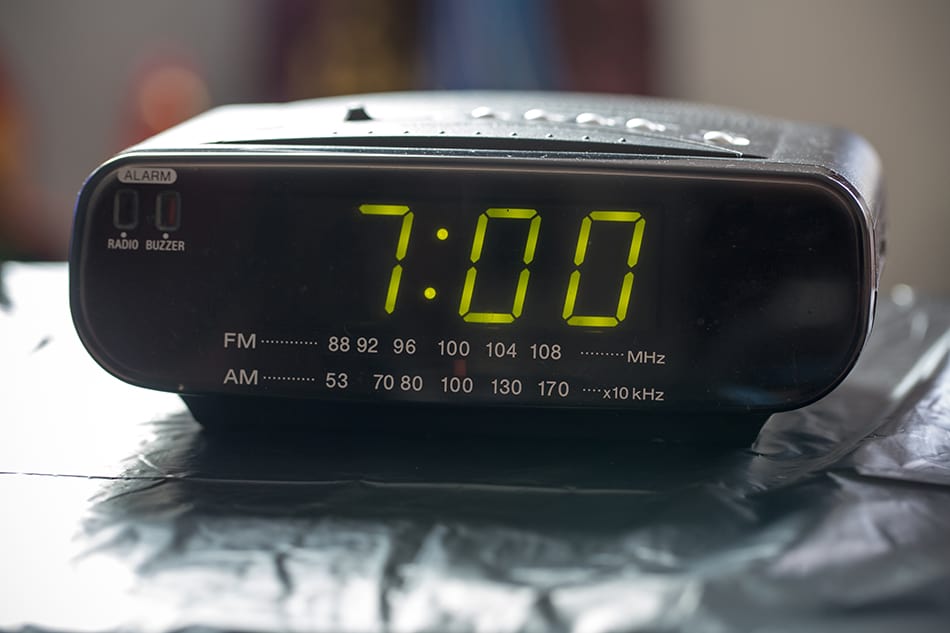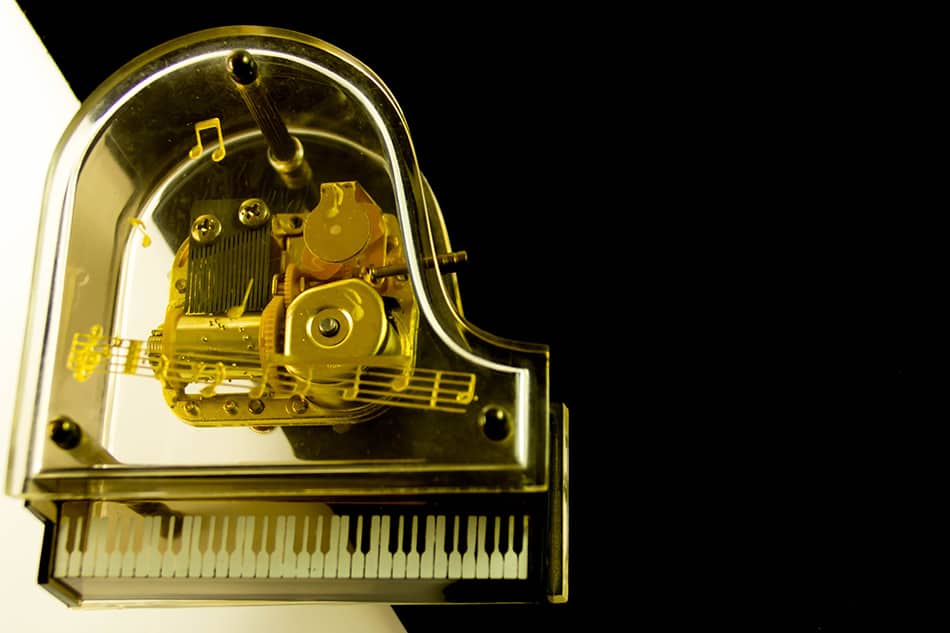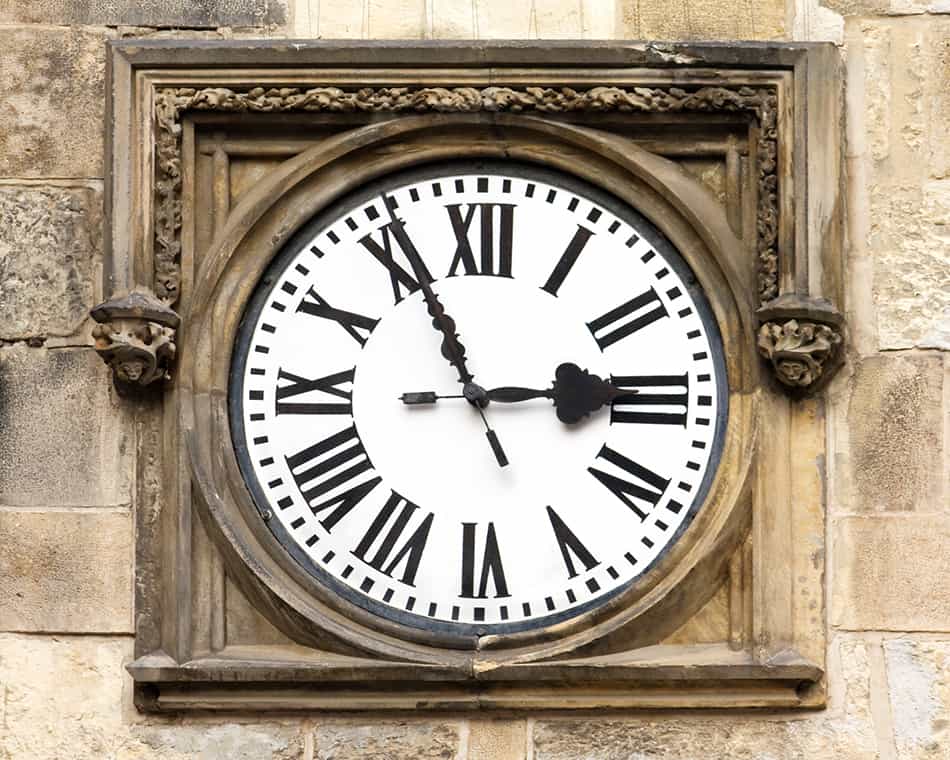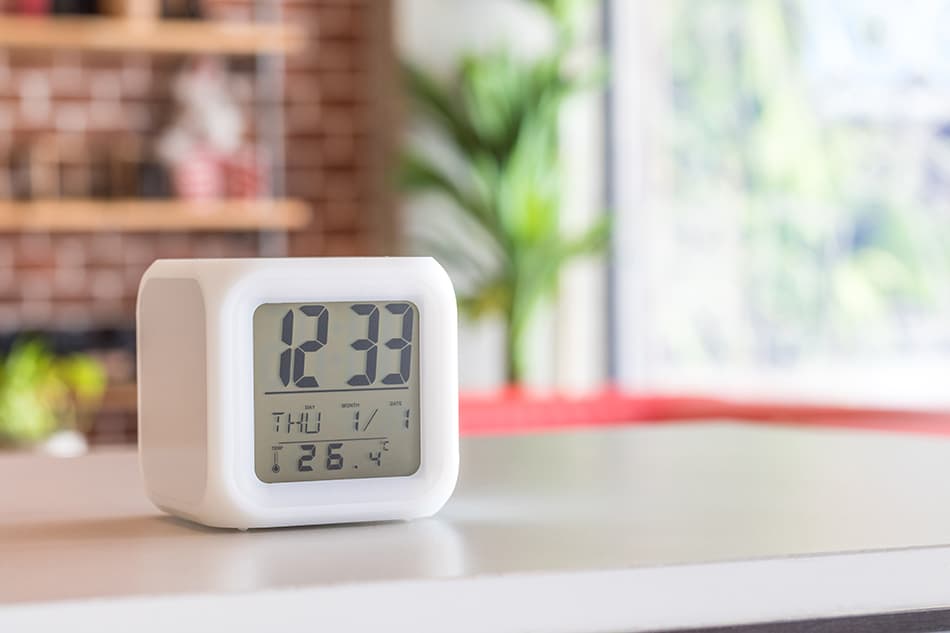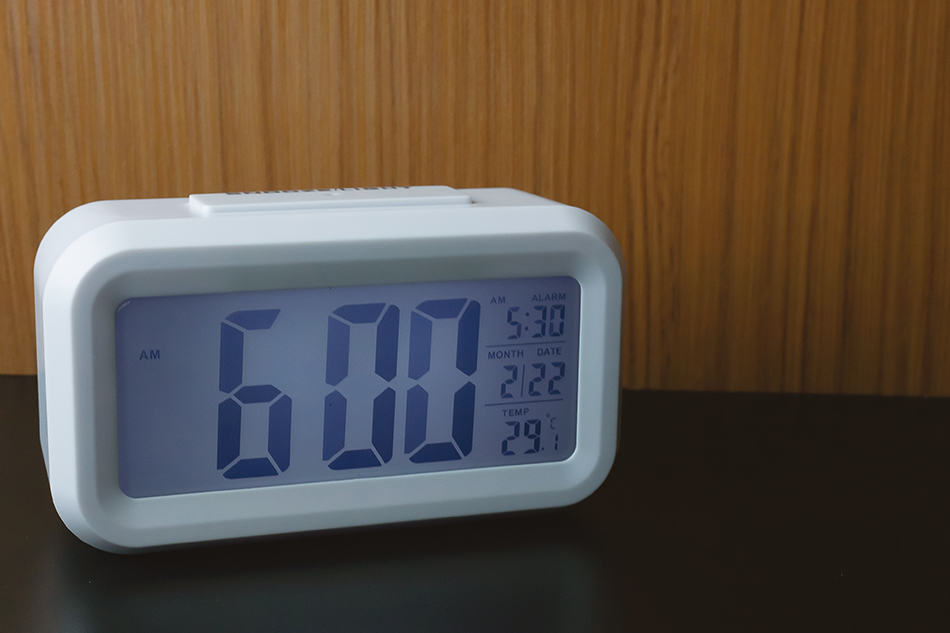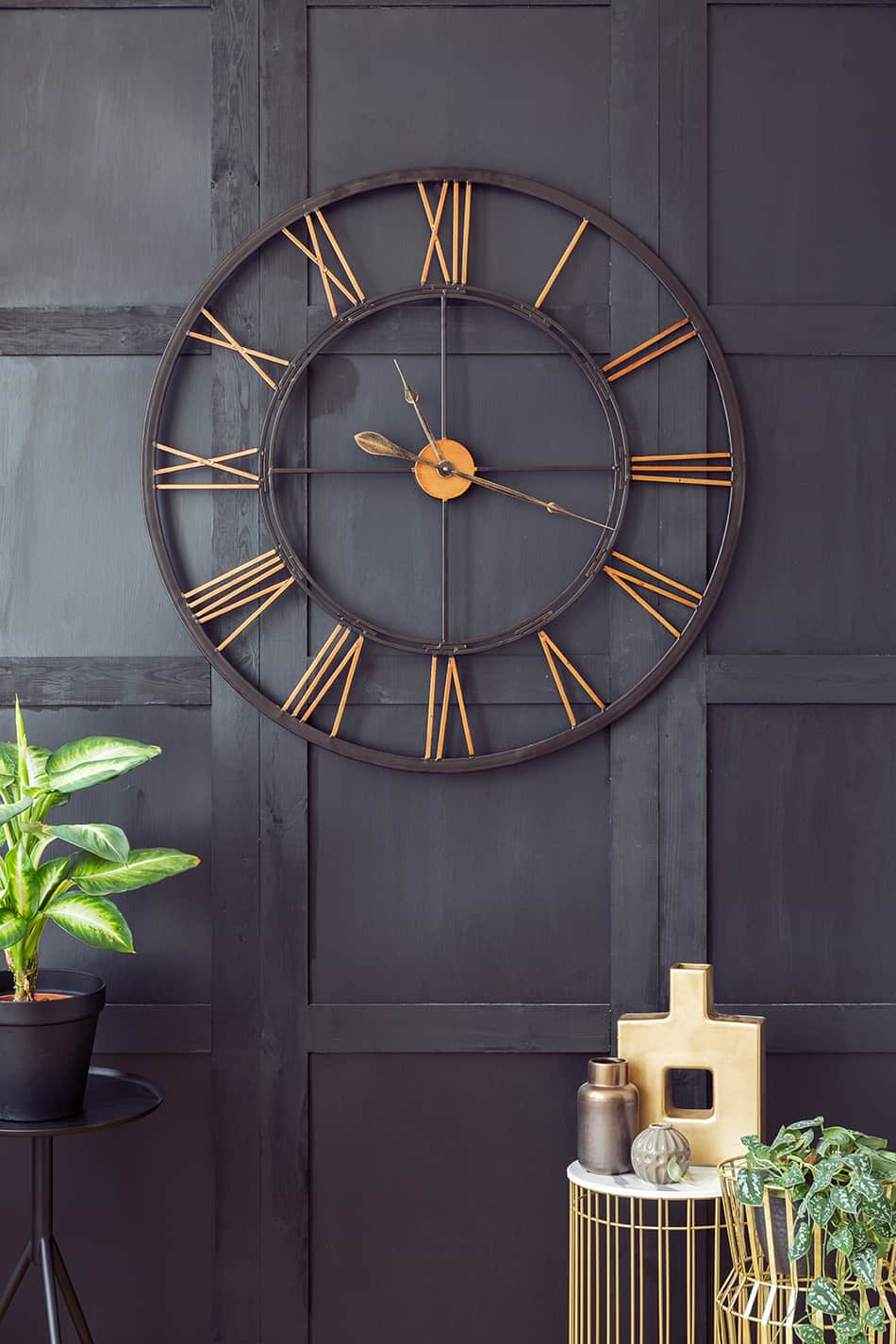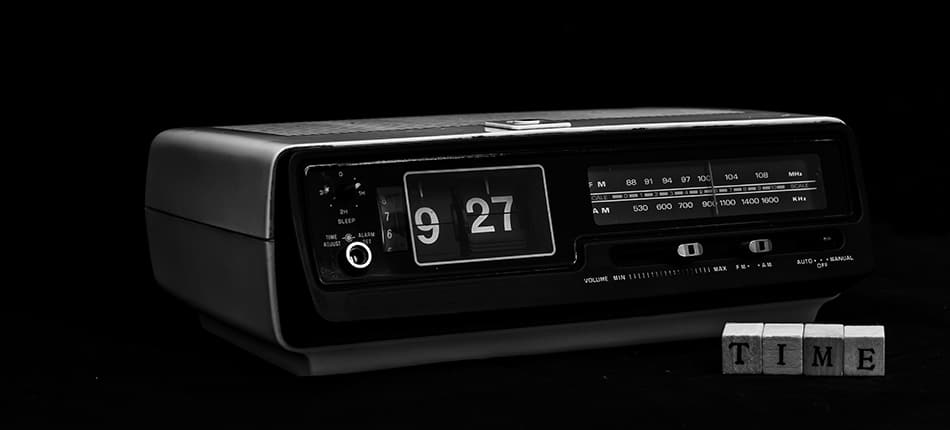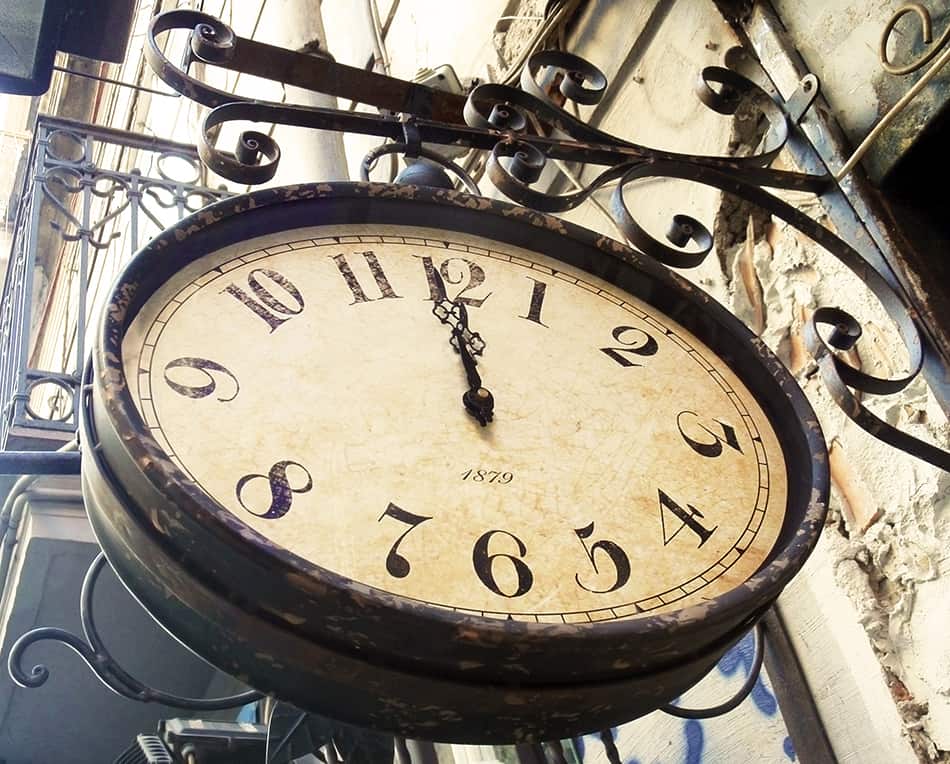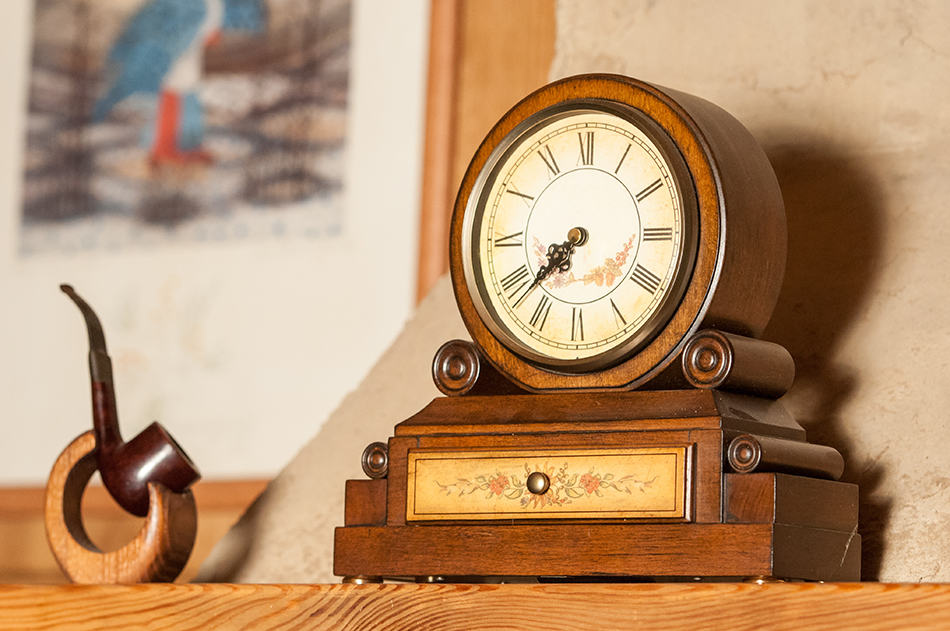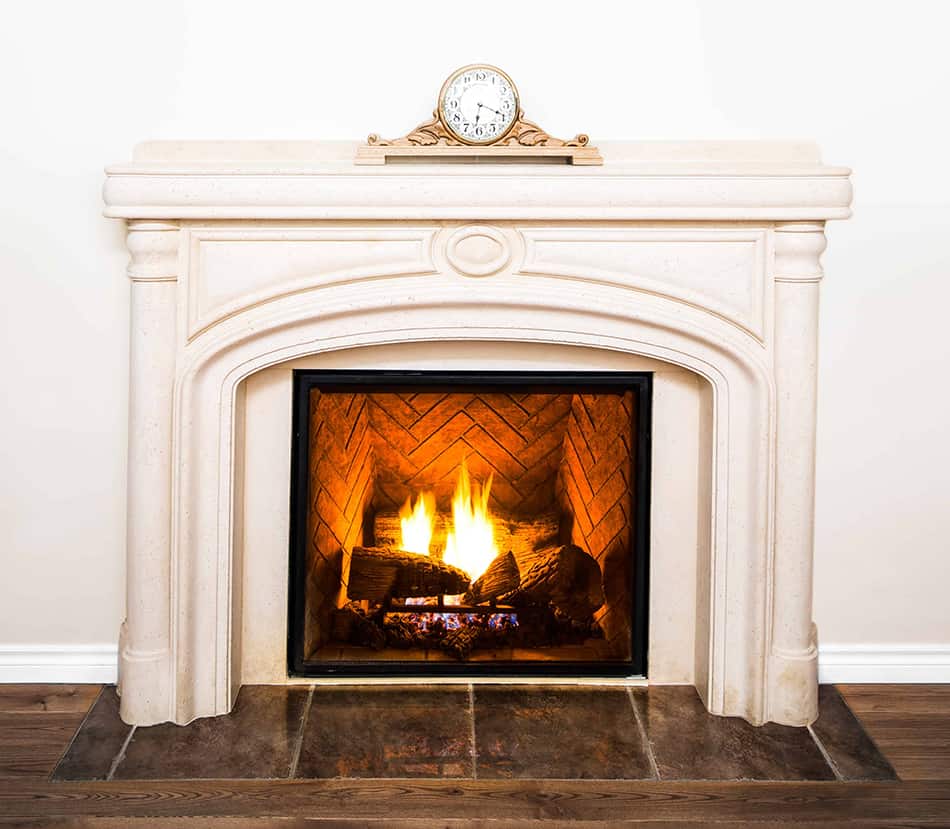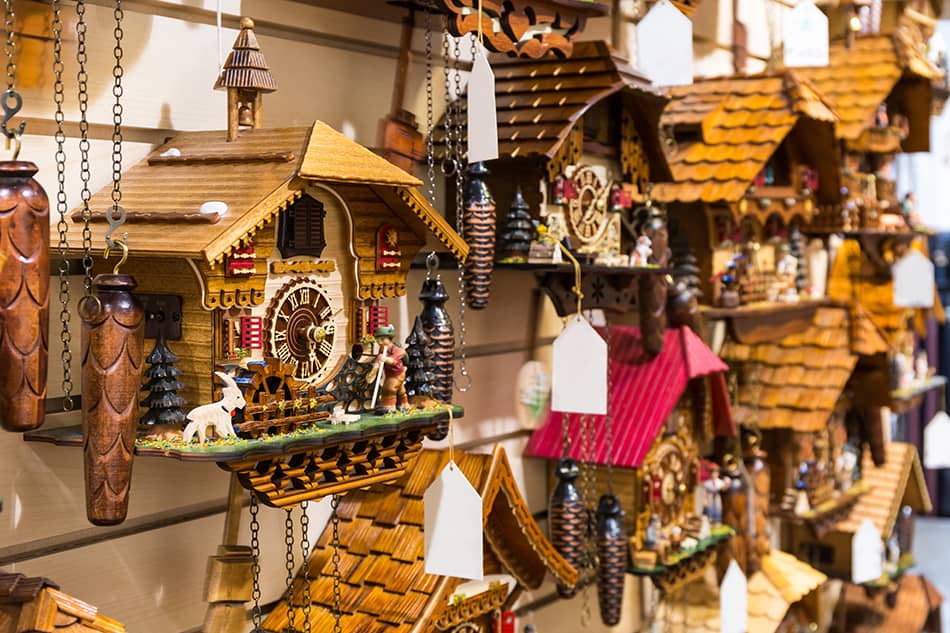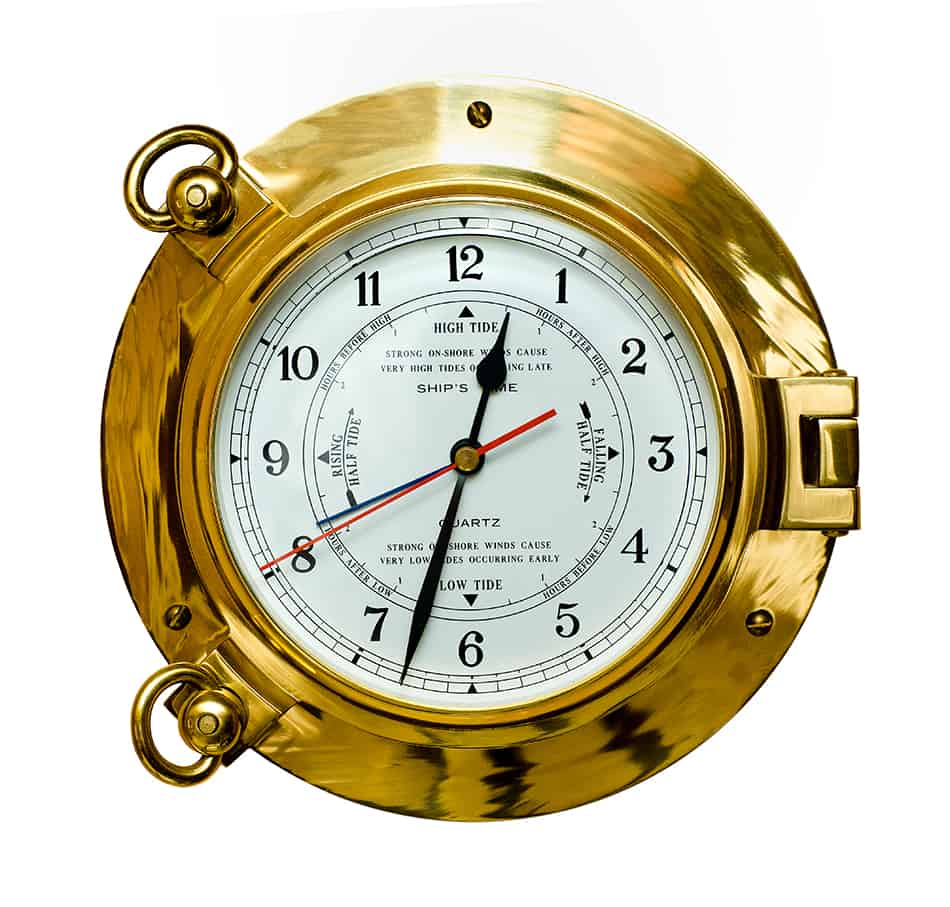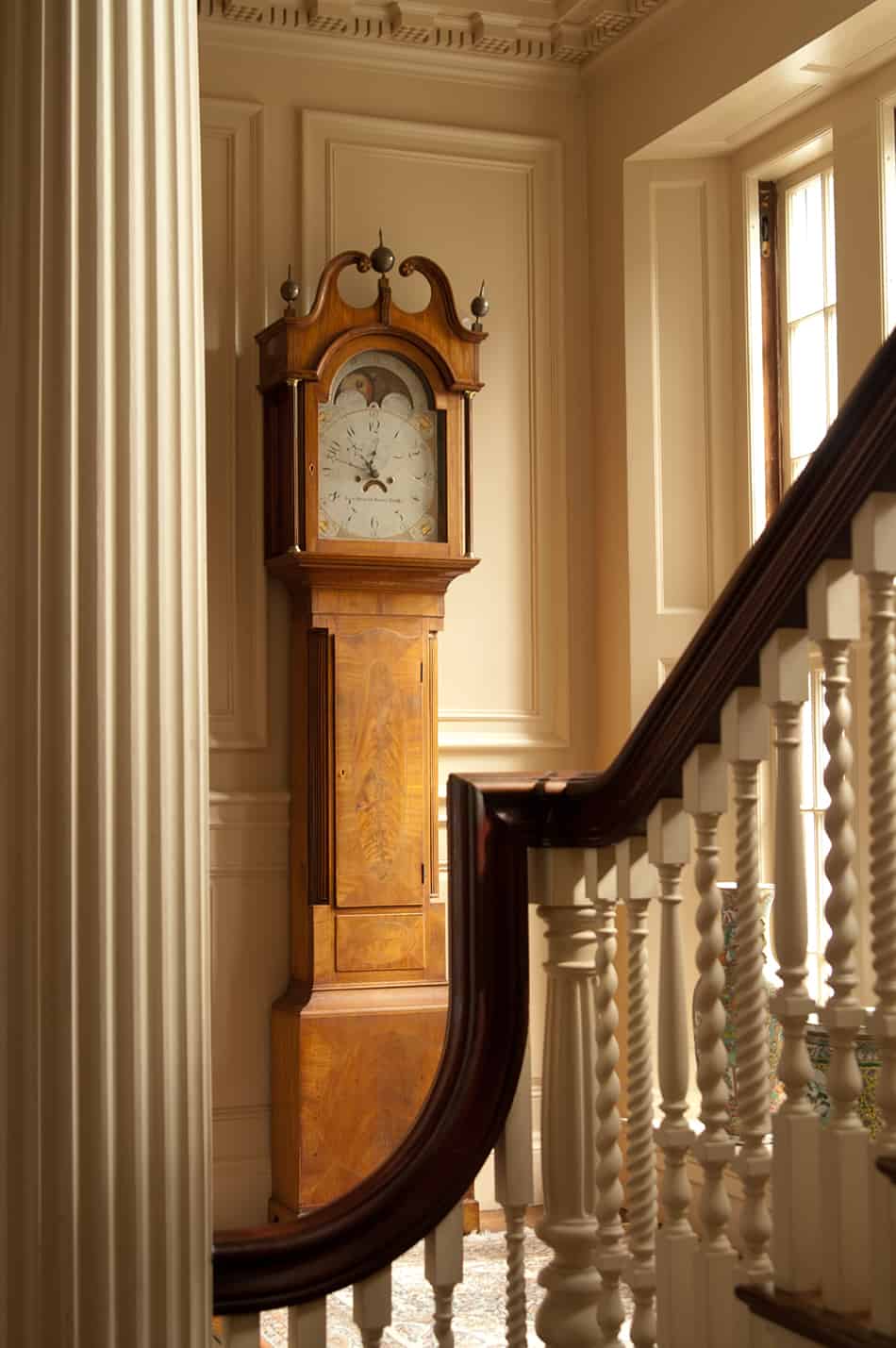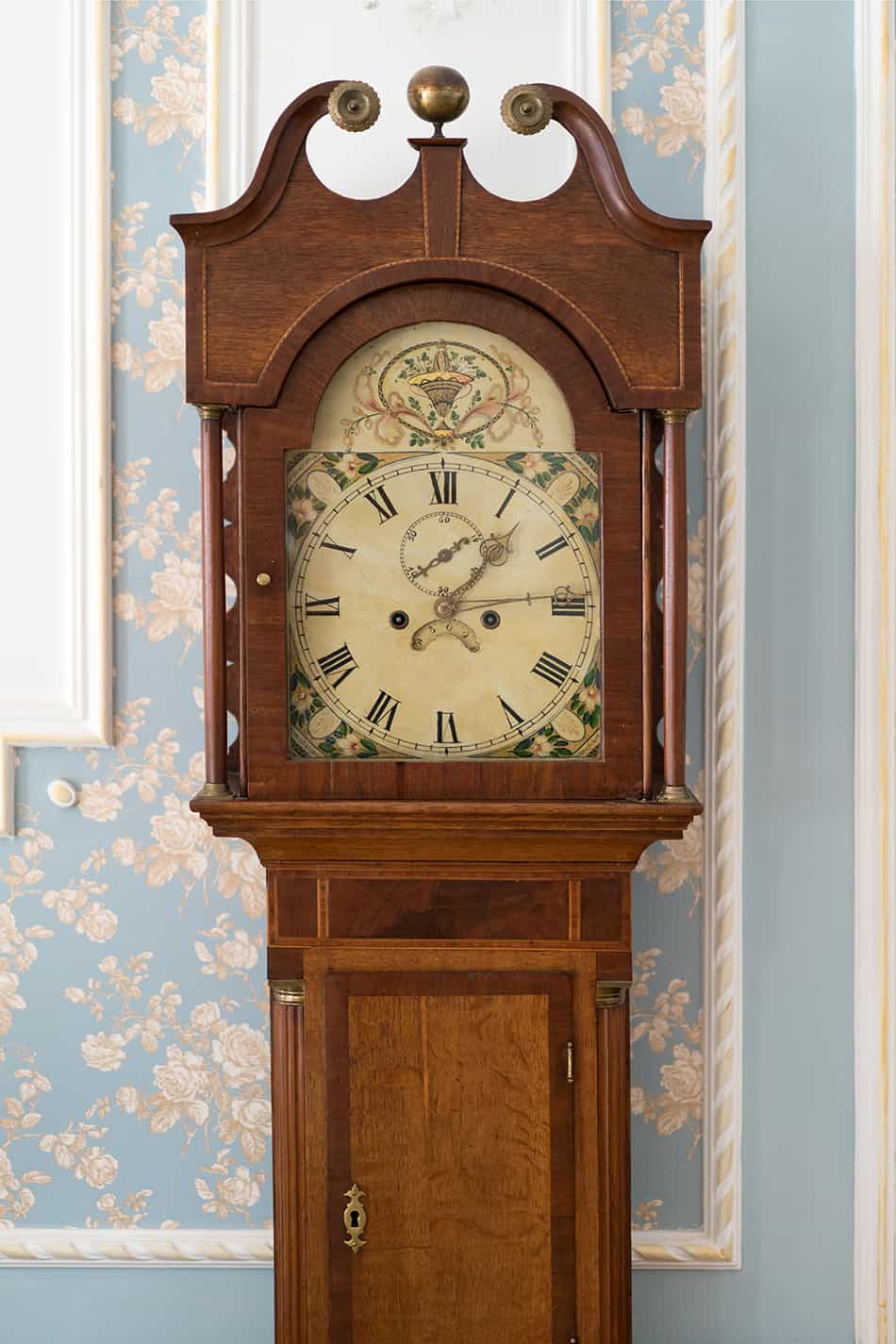A clock is a tool or instrument that displays the time. For thousands of years, humans have been tracking time by using various tools, such as sundials, water clocks, hourglasses, and candle clocks.
Clocks can be found everywhere, from offices and homes to churches and public places. These instruments come in various sizes and shapes, and can often be seen in mobile phones, computer displays, and even in people’s pockets.
But before we take a closer look at the most common types of clocks, let’s first dig deeper into the history of clocks and how they actually work.
The Fascinating History Of Clocks
Clocks are possibly the oldest human inventions that date back as early as 1300 when the first mechanical time measuring device was invented in Europe.
It all started with the direction of the sun using a sundial to tell the time. The sundial consisted of a vertical metal stick on a horizontal surface that was marked with morning, noon, afternoon, evening, and night.
The time of the day was read through the position and length of the shadows on the markings. Although the sundial wasn’t a very accurate way of telling time, it was, nevertheless, used for almost 2,000 years.
However, with the advancements in technology, more accurate clocks were invented. By 1652, the pendulum clocks became the world’s most precise time measuring devices and were the most widely used across the globe.
Next came the Grandfather clock around 1700, and in 1775, the cuckoo clock was invented followed by the electric clock in 1840. In 1929, the quartz clock became highly popular as a wrist watch and portable clock.
How Do Clocks Work?
A clock can only work when it has a primary power source. Whether it’s a battery, suspended weight, or power line, all clocks use a regular rhythm movement to measure time. This rhythmic back-and-forth movement moves at a certain speed over and over again.
The counter chains are then used to show the readings of seconds, minutes, and hours. The displayed time indicator is in a readable format that can easily be understood.
Now that you have a basic idea of how clocks work and where they come from take the time to read the rest of this article and learn about the different clock mechanisms, clock features, and the most popular types of clocks that are still used to this day.
5 Types of Clock Mechanisms
1. Atomic
Atomic clocks are devices used to measure frequency in electron, microwave, and electromagnetic transition of atoms. These clocks are designed to measure the exact length of a second by combining a quartz crystal rhythm movement for greater stability.
Atomic clocks are mostly used in NASA for onboard GPS satellites that orbit the Earth. But they are also used for synchronizing time in GPS, electric power grids and smartphone watches.
2. Mechanical
Mechanical clocks comprise an oscillator that measures the passing of time. When compared to atomic clocks, the mechanical clock is less accurate. Having said that, it can be used at any time of the day or night – even in the most extreme weather conditions.
These types of clocks are still widely used today for transportation schedules, the Internet, TV schedules, GPS, aviation, and financial markets. In addition, many scientific investigations require a mechanical timekeeping device to carry out specific time measurements.
3. Electric
Instead of winding a clock manually, an electric clock is powered by electricity, so all you need to do is plug it into an electric socket. One of the main issues these types of clocks can face is falling behind with time in the event there is no power coming into the building. To make sure the electric clock is functioning accurately after a power outage, you must reset the time once the power has resumed.
4. Quartz
Quartz clocks rely on electronic rhythm movement that’s regulated by quartz crystals in order to measure time. This crystal oscillator is the most important part of the clock that makes it much more accurate than a mechanical clock.
Quartz crystals vibrate when an electric charge passes through the crystal oscillator. As a result, it generates voltage while vibrating. These types of clocks are highly stable and can withstand the most adverse weather conditions. Not only do they not lose their shape in extreme temperature fluctuations, but they will also remain highly accurate in every environmental condition.
5. Pendulum
Pendulum clocks are one of the best-known types of clocks in the world. They were first invented in the mid-1600s and have been consistently used in homes and public places.
These types of clocks have very wide pointers that allow the device to keep order. The modern designs of pendulum clocks, however, normally come with smaller-size pointers so they won’t take up much space in a room.
But despite their high popularity among households, there are some issues with pendulum clocks. Firstly, you’ll need to remember to wind them regularly. If you forget to do so, they will stop working and you won’t know what time it is.
Secondly, pendulum clocks rely on gravity force to function. The force of gravity can vary slightly depending on the location. This means the clock can tell the time differently when it’s located at high altitudes from sea level. Furthermore, in temperature fluctuations, it can change length by expanding on warm days and contracting on cold days. All these issues can make the pendulum clocks less accurate.
10 Types Of Clock Features
1. Analog clock
Analog clocks are one of the most popular clock features that comprise of numbers on the outside of the instrument’s face. These clocks also display the minute and hour hands to show the time. They usually come with a second hand to help people read short periods of time.
You can find these devices almost anywhere, but despite their useful function, you’ll need to have some practice in reading the time on an analog clock. While reading the time on an analog clock is no more complicated than on digital clocks, it usually consists of a professional design that makes people think otherwise.
Analog clocks are widely used in schools and offices rather than homes because of their smart look.
2. Digital clock
You will have already heard about digital clocks and may have used them yourself. These clocks are considered to function as the best alarm clocks and with just a quick glance, you’ll easily be able to tell the time. This is because digital clocks have a special mechanism that makes it easier to read the time. Even children can learn how to read the time using digital clocks.
Since there are no minute and hour hands, the displayed numbers used in a digital clock not only makes it easier to tell the time during the day, but they also glow in the dark, so you can tell the time from the comfort of your bed right in the middle of the night.
3. Battery-powered clock
There are many different types of battery-powered clocks. Their main purpose is to provide you with peace of mind knowing a power cut wouldn’t affect them. However, you will need to replace their battery from time to time.
For those who value flexibility and convenience, these types of clocks will be ideal as they can move them from one room to another without having to disconnect and reconnect any cords unlike electric clocks.
4. Electronic Word clock
Electronic word clocks don’t use numeric displays. Instead, the words on the screen tell you the time. These words can either be recorded via hardware or software. For example, the clock will visually display the time by using this sentence, “it’s four o’clock.”
5. Radio clock
Radio clocks are ideal for anyone who doesn’t just want to check the time, but they also want to enjoy listening to radio or music. These clocks can be placed on the desk or bedside table and offer two functions at the same time.
One benefit of choosing such clocks is that you can set the alarm and wake up to a specific music from a radio station rather than an annoying beeping sound.
Aside from an alarm function, the other feature included with radio clocks is the temperature and humidity display.
6. Musical clock
Musical clocks mark the hours using a musical tune. These elaborate clocks are the same versions of chiming clocks. Every hour, they play a mechanically animated tune in the background. Many musical clocks feature popular songs as part of their mechanism.
7. Calendar clock
Calendar clocks are mostly used to place on office desks so you know exactly what the date is without having to refer to an actual calendar. These clocks take less space than actual calendars, hence their popularity in offices and workplaces. However, they don’t generally show the whole month.
8. Roman numerals clock
The Roman numerals clocks are the most classic types that date back to many centuries ago. In fact, most pocket watches and wall clocks generally had Roman numerals on the dials.
But today, these clocks aren’t as popular as analog or digital clocks, although it’s still possible to find Roman numerals clocks in local stores. Some people prefer to buy such clocks as they look very attractive in the way they are designed and are highly functional, while others find it a little difficult to read the time on these clocks.
9. Multi-display clock
These types of clock features can be either digital or analog. Their main purpose is to display multiple time zones, temperatures, and dates. They are particularly useful for travelers. Some clocks have two further displays, one showing the meantime and the second one showing solar time.
The partially sighted or blind people will especially find multi-display clocks easy to read as they come with Braille displays and large digits.
10. Light sensor clock
Light sensor clocks are highly beneficial for children’s bedrooms or a sick person’s room as they don’t make any sound once the room becomes dark. No matter where the clock is placed in the room, once you turn off the lights and draw the curtains, the light sensor clock will completely go quiet.
These clocks will automatically self-adjust based on the lighting condition of the room, unlike clocks with automatic chimes that require manual shutoff.
10 Popular Types of Clocks
1. Wall clock
Wall clocks are, without a doubt, the most popular type of clocks for homes and offices. And their popularity is for good reasons. They can be hung from any wall of the house for wall decorating purposes and for people to read the time quickly. These types of clocks are usually hung in public areas, where they can be accessed easily.
Wall clocks come in all kinds of components, shapes, and sizes. There are also novelty wall clocks in different designs to match your home decor.
Unlike other clock types on the market that can only be placed on the table or desk, wall clocks ensure people know exactly what time it is just by glancing up.
2. Audio clock
Audio clocks use human voice recording or computer-generated voice to tell the time. Some audio clocks use auditory codes instead of voice to display the time.
These types of clocks are often used for announcing the time in churches (using church bells that ring every hour) or for blind people. You can also find digital audio clocks that show the time and announce it through a human or computer-generated voice.
3. Outdoor clock
For those who run their own store or restaurant and want to decorate the exterior part of their business premises, an outdoor metal clock will be the ideal choice. You will see these types of clocks hanging outside many boutiques and stores across Europe. They are not only attractively designed and functional, but they allow you to tell the time quickly.
Outdoor clocks are also a great option for hanging on the patio or yard of your home to enhance its decor. Some outdoor clocks combine both a humidity gauge and thermometer into one unit. All outdoor clocks are weather-proof. They can withstand adverse weather conditions without losing their functionality.
4. Tabletop clock
Tabletop clocks are usually smaller than most other clocks, with a more discreet look than wall clocks.
There are different styles, materials, and designs to choose from based on your interior decor. For a traditional or classic style, you can opt for wooden or wrought iron tabletop clocks.
5. Mantel Clocks
A mantel clock (shelf clock), as the name suggests, is a spring-driven clock intended to place on a shelf (mantel) above a fireplace. But like a tabletop clock, they can be placed on any surface except the floor and wall.
These clocks are works of art, typically made with a wooden or metal exterior; as such, they are a great decorative furniture piece for the mantel and the room. They have a numeral face with an hour and minute hand and can operate by battery (quartz) or windup (mechanical).
6. Projection clock
Projection clocks are usually digital and include a projector that displays a magnified image of the time on a screen or surface. These types of clocks are used on the walls or ceiling. The digits of the projection clocks are large enough for easy reading. They are ideal for partially sighted people who want to read the time in their bedrooms or living rooms.
Most projection clocks have a battery as their backup power source, but the projection light of the unit only works when it’s connected to an electricity supply. Having said that, you can find portable battery-powered projection clocks that look similar to flashlights and don’t require an A.C. supply.
7. Cuckoo clock
Cuckoo clocks are another popular type of clock found in homes. These clocks are considered to be the most fun way of reading time thanks to their unique features. Rather than looking at the clock to check the time, a cuckoo clock can be listened to instead. Just as the name suggests, the clock produces a cuckoo bird call every time its dial strikes the hour.
Another unique and interesting characteristic of the cuckoo clock is its small door design. This small door automatically opens, and the cuckoo bird pops out. The device’s mechanism is created in such a way that the bird comes out and goes back in according to what the time is.
For instance, if it’s 10 o’clock in the morning, the bird pops in and out 10 times. Some cuckoo clocks come with a feature that allows the sound to be turned off. This will save you from getting disturbed by the bird’s call in the middle of the night.
The dials on cuckoo clocks are typically small and marked with Roman numerals. These clocks can be a great interior feature or conversation piece when you have guests around.
8. Marine, weather station, or maritime clock
Marine or weather station clocks don’t just make a great gift for anyone who loves nautical themes in their boats, homes or offices, but they also allow you to monitor the weather conditions and humidity outside. Rather than buying three separate devices for measuring time, humidity, and weather, you can have all these in one convenient equipment.
Maritime clocks boast aesthetically pleasing designs and are perfect for those who enjoy the look of these unique clocks in their yachts, homes, or offices.
9. Grandfather clock
If you are seeking a large size and classic clock, a longcase or grandfather clock will be the best choice. Grandfather clocks are possibly the largest and most traditional types of clocks in the world. Most of these clocks are freestanding and tall with a pendulum mechanism located inside the waist or tower of the clock case.
This pendulum clock type can be up to 2.5 meters tall and is most typically found in manor houses or mansions. Since these clocks comprise a classic design and are beautifully made to fulfill functional purposes, many people tend to opt for them to enhance their home’s rustic appearance.
These clocks are mostly found in antique or vintage stores and they often come with high price tags depending on their age.
The modern grandfather clocks usually have a life expectancy of around 15 years before developing internal mechanism problems. To keep them in tip-top condition, it is important to have the mechanical parts oiled every 5 years or so.
But before you take on the task of oiling your grandfather clock, you should know that such a job should be left in the hands of experts. The process of oiling this timepiece involves careful removal of the dial and hands of the front oscillator before applying a special type of oil that minimizes friction in the clock. So as you can see, this is not a DIY job!
10. Floor clock
Floor clocks are similar to grandfather clocks as they are also large in size and freestanding. Floor clocks, just as their name suggests, rest on the floor and are the second most popular types of clocks after grandfather clocks.
The modern versions of floor clocks that are becoming more fashionable these days consist of a tripod. One main benefit of such clocks is their flexibility in being placed anywhere in the home, especially if you don’t have any vacant wall space.
Tenants will also find floor clocks a better choice than wall clocks as they won’t have to make any holes in the walls to mount the clock.
11. Alarm clock
The most obvious type of clock is an alarm clock that’s designed to alert you at a specified time. The main function of these clocks is to awaken you or send you a reminder. Most alarm clocks tend to use vibration, light, or sound as their alert functions.
According to historians, the mechanical type of alarm clocks first originated in Germany back in the 15th century. But it’s not known who invented these clocks as most people didn’t use an alarm clock in those days. They mostly relied on the sunset or sunrise, their servants, or prayer bells.
Factory workers who lived close to their workplace relied on their manager’s whistles to wake up. Over time, many different forms of alarm clocks came and went, until smartphones came to the market. Now, most people tend to use the alarm on their smartphones to wake them up or send them reminders.
